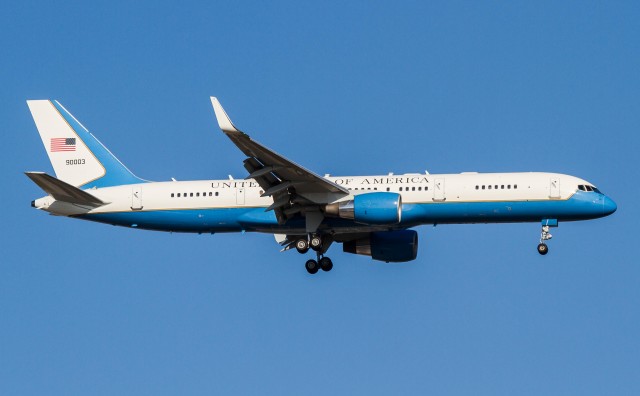
US Secretary of State John Kerry arrives at the G20 in Brisbane aboard a C-32
The annual G20 (group of twenty) Summit is the gathering of the world’s 20 most powerful and influential nations to discuss various political and economic issues facing the world. As with any gathering of major international powers, there was a vast array of interesting and unique aircraft on show.
This year’s summit was held in Brisbane, Australia, during the weekend from November 14th – 16th. As I was in Brisbane during this time, I was very fortunate to partake in some good old plane-spotting.
Over 40 aircraft part took in the G20 Summit; this ranged not only from the various head of state VIP aircraft but also the countless support aircraft. These aircraft carried everything from advance teams to motorcade vehicles, right through to food for the various world leaders and dignitaries attending the summit.
Additionally, the US delegation also brought with them a number of helicopters including “Marine One” and V-22 Ospreys to assist in the transfer of POTUS from the military base where he landed into the city.
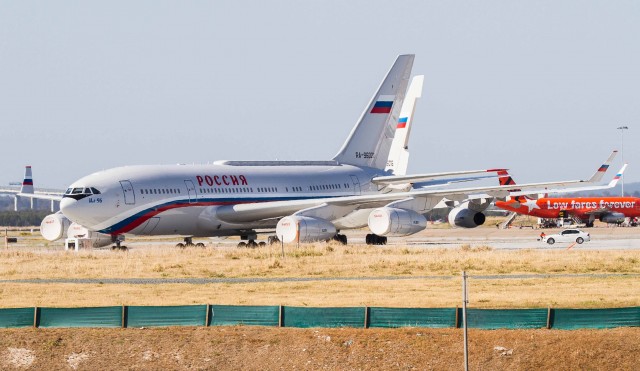
The dedicated media/spotters area for the event allowed for some great views of the three IL-96 aircraft from the Russian delegation
As with any major event of this nature security was very tight. There were over 6,000 additional police on duty for the weekend. Now, most would expect that the airport would be completely off-limits to spotters. But thanks to some outstanding work by the local plane-spotting community, in particular the work of YBBN Spotters Group together with Brisbane Airport Corporation (BAC), there was a dedicated area set up on airport property for registered spotters and media.
Unfortunately, due to the prevailing winds and runway configuration, the area was only really suitable for afternoon and evening movements. Even so, there was plenty of other locations off-airport to get some spectacular images.
Below is a selection of images that I have taken during the event showcasing the vast array of different and unique aircraft used for the event by the various visiting nations. Unfortunately, due to the timings of some arrivals, it was not possible for me to capture all of the visiting aircraft, but I feel I was able to capture quite a few special aircraft.
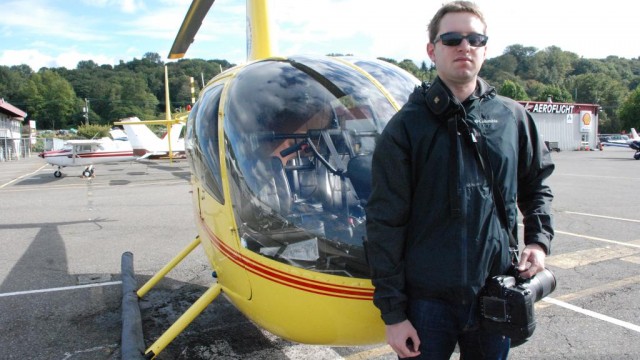
AirlineReporter’s own Bernie Leighton in front of a helicopter at Boeing Field (BFI) – Photo: Britton Staniar | Bloomberg News
When Julie Johnsson, Aerospace Reporter with Bloomberg News, asked if I knew of a good plane spotter in Seattle that she could speak with, Bernie Leighton quickly came to mind!
Bernie is a Managing Correspondent with AirlineReporter and he has provided some amazing photos of aircraft of all types and sizes in the Seattle area and around the world. His specialty: aerial shots.
I am always excited when a journalist with a major media outlet is looking to bring AvGeeks into the mainstream, and after speaking with Johnsson for a short-while, I knew she understood who we were and was excited to read her story. That said, I was a bit curious to why she was motivated to do this story now.
“I’ve been tracking photographers like Bernie on Airliners.net for years, so it was pretty cool to follow him in real life,” Johnsson explained to AirlineReporter. “I was curious to learn more about folks who are documenting Boeing’s jetliner production, what motivates them — and the 787’s role in galvanizing AvGeeks.”
Sounds good to me.
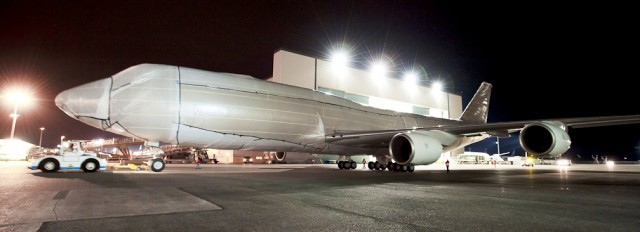
Boeing has to get creative to hide a new livery. Here’s the first 747-8I covered before the big reveal – Photo: Boeing
From Bloomberg News’ story by By Julie Johnsson and Britton Staniar…
Bernie Leighton leans out an open-sided helicopter into a chilly breeze, Nikon camera glued to his face as he focuses on his unsuspecting photographic quarry.
The celebrity in his lens is no Kardashian. It’s Etihad Airways’ first 787 Dreamliner, parked outside Boeing Co. (BA)’s wide-body jet plant north of Seattle and an object of desire among planespotters for a new, secrecy-shrouded paint scheme.
Leighton is angling for Internet fame as he stalks the 787, already one of the most-chronicled industrial products on the planet for its futuristic design and troubled start. Selling the first aerial shot of the shimmering silver-and-gold Etihad plane would also cover the cost of his $500 copter ride.
Continue reading Bloomberg Takes Sometime to Find out What it Means to be an AvGeek & view the video on Bloomberg News.
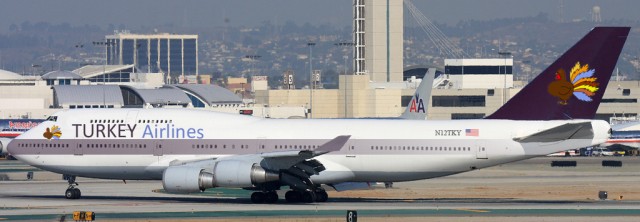
I don’t know if I would fly Turkey Airlines – Original Photo: Jeremy Dwyer-Lindgren | JDLMedia – Photoshop: David Parker Brown
Although our readership has grown quite a bit outside the United States, we still have about half of our readers based in the country. And for those of us in the US, today is Thanksgiving. A day where we get to be thankful for all the positive things in our lives. For all of us at AirlineReporter, we are very thankful that you read our stuff, you engage in the comments, and motivate us to keep on going.
A Happy Thanksgiving for all of you celebrating, and a wonderful Thursday to those who are not!
If you are a fan of the Boeing 767, this video might make you a bit sad.
Qantas Airways is in the process of retiring their final 767-300ERs and the TV show 60 Minutes produced a story following VH-OGG from Australia over to Victorville Airport (VCV), home of probably the most famous airliner graveyard. Many times the main-stream media drops the ball when it comes to stories like this, but I have to admit that they did a pretty darn good job!
VH-OGG first flew at Paine Field on November 27, 1990. It was delivered to Qantas on December 12th of the same year and served with the airline for its entire life — up until now. The aircraft even sported a special Planes livery from Disney on the fuselage for a while.
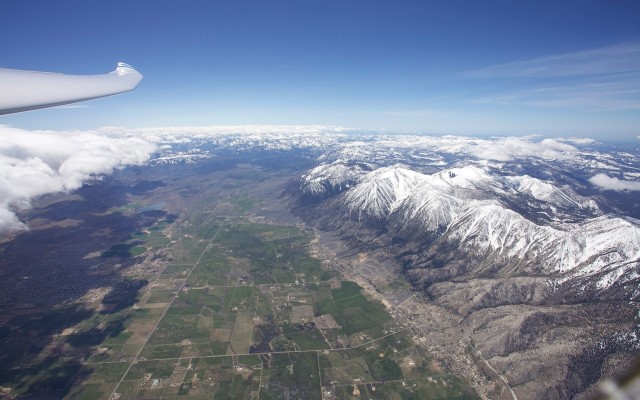
Another amazing photo by Gordon Boettger, from 26,000 feet over the Carson Valley, during a glider wave flight
Let’s pick up where we left off in Gone Gliding, Part Two, shall we?
We’re at Minden-Tahoe Airport in Soaring NV’s LS4 glider, hooked up to the Piper Pawnee towplane, and just starting our takeoff roll. Spencer, our ground crew, runs alongside the glider for a few feet while holding the wingtip. The ailerons are alive in a couple of seconds, and I hold the wings level with the stick, while steering along the runway centerline with the rudder pedals.
With the single main wheel rumbling under my seat, we accelerate quickly as we’re hauled along the runway. A little bit of forward stick gets the LS4’s tail wheel off the ground, and then I move the stick ever-so-gently rearwards. The glider levitates, and we carefully hold position just a few feet in the air, right behind the tow plane. Now that we’re airborne, we’re less drag for the Pawnee, and Silvio lifts off.
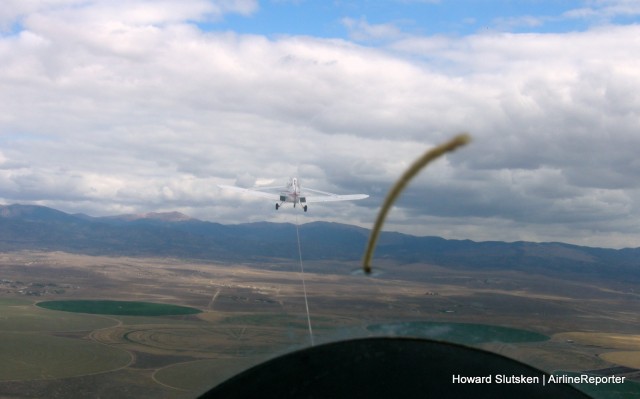
On tow behind the Pawnee, heading east, over the Carson Valley
I’m primed for a possible rope break, and glance at the altimeter as we cross the end of the runway. It shows a bit under 5,000 feet, and I call out ’œ200 feet!’ We’ve passed the first ’œgate’ at 200 ft above the ground, and if the rope breaks, we can now safely fly a 180-degree turn to land downwind on the runway. Silvio starts a climbing left turn to cross over the airport, and we’re nicely locked in, on tow. The feeling is something like being pulled behind a ski boat, and I’m not even thinking about what I’m doing to the controls, just reacting and flying. Heading east, and crossing over Runway 34, I relax. If the rope breaks now, we’re high enough to easily complete a normal pattern and landing.
As we continue to climb, I call Silvio and tell him that we’d like to ’œbox the wake,’ which is great practice while on tow. He acknowledges, and I start the maneuver by climbing a bit above the towplane, while keeping the rope taut. I stop for a moment, then fly the glider to the right, and stop again at the first corner of the ’œbox.’ Descend a bit, and stop below the towplane at the next corner. Now it’s a slide across the bottom of the box, stopping at the third corner.
Gentle nose up, keep the rope taut, climb above the towplane, and stop at the last corner. Then slide back behind Silvio, hold, and drop back down into the normal tow position, lining up the Pawnee’s horizontal stabilizer with its wing. Smooth, smooth, smooth, all the way around, and I don’t think that I yanked the Pawnee’s tail, even once. I realize that I’m grinning ’“ nailed it!






